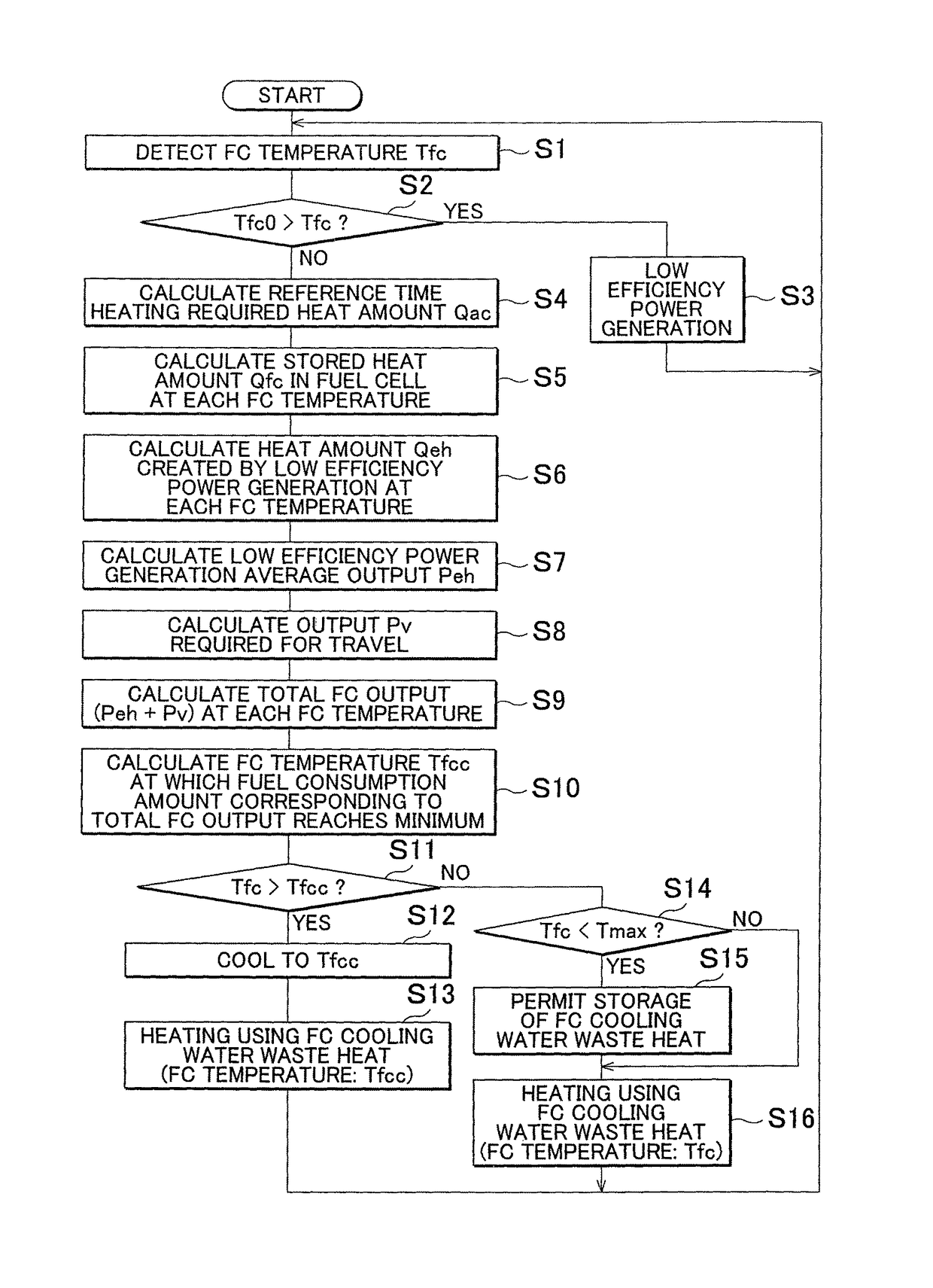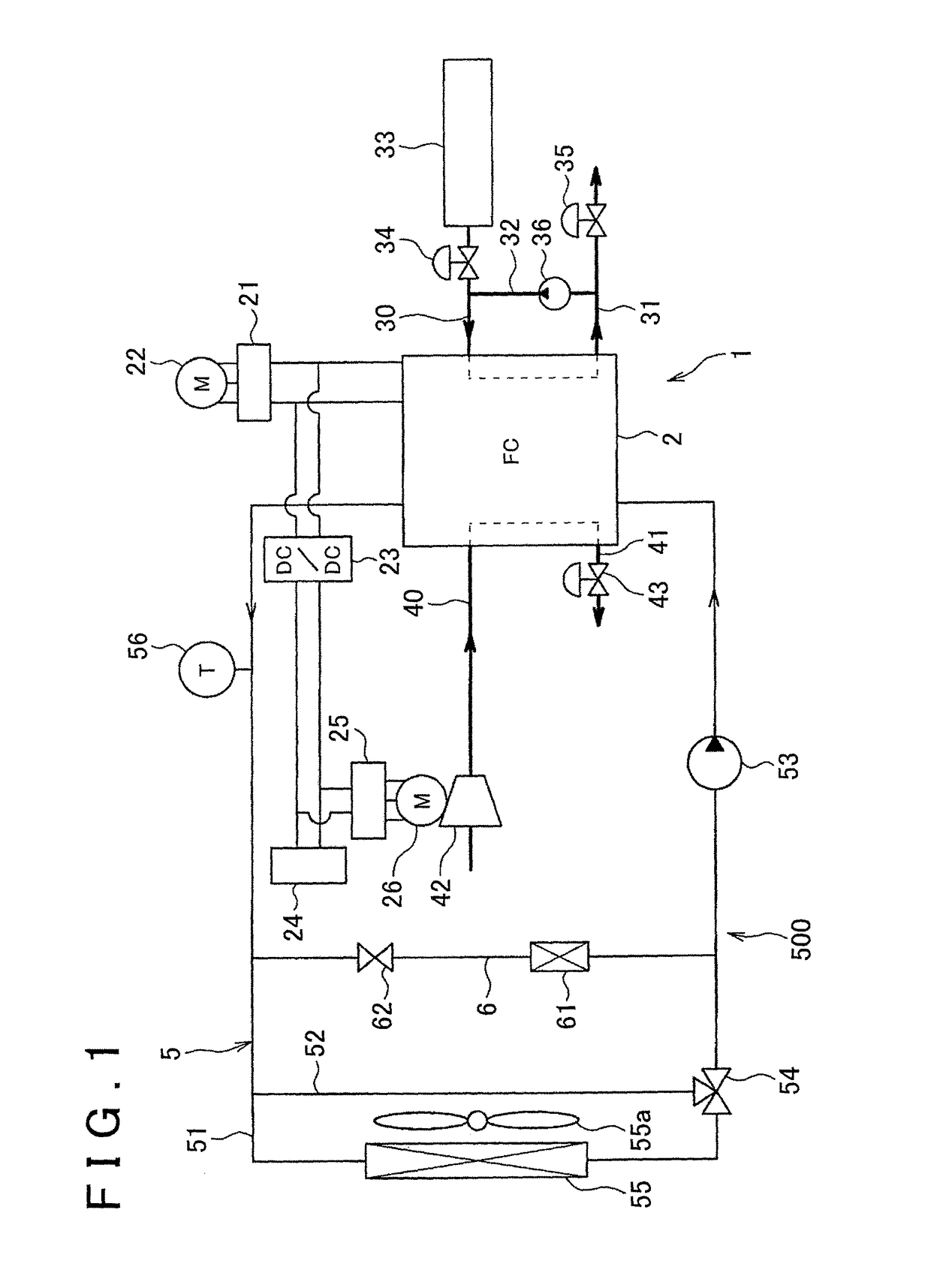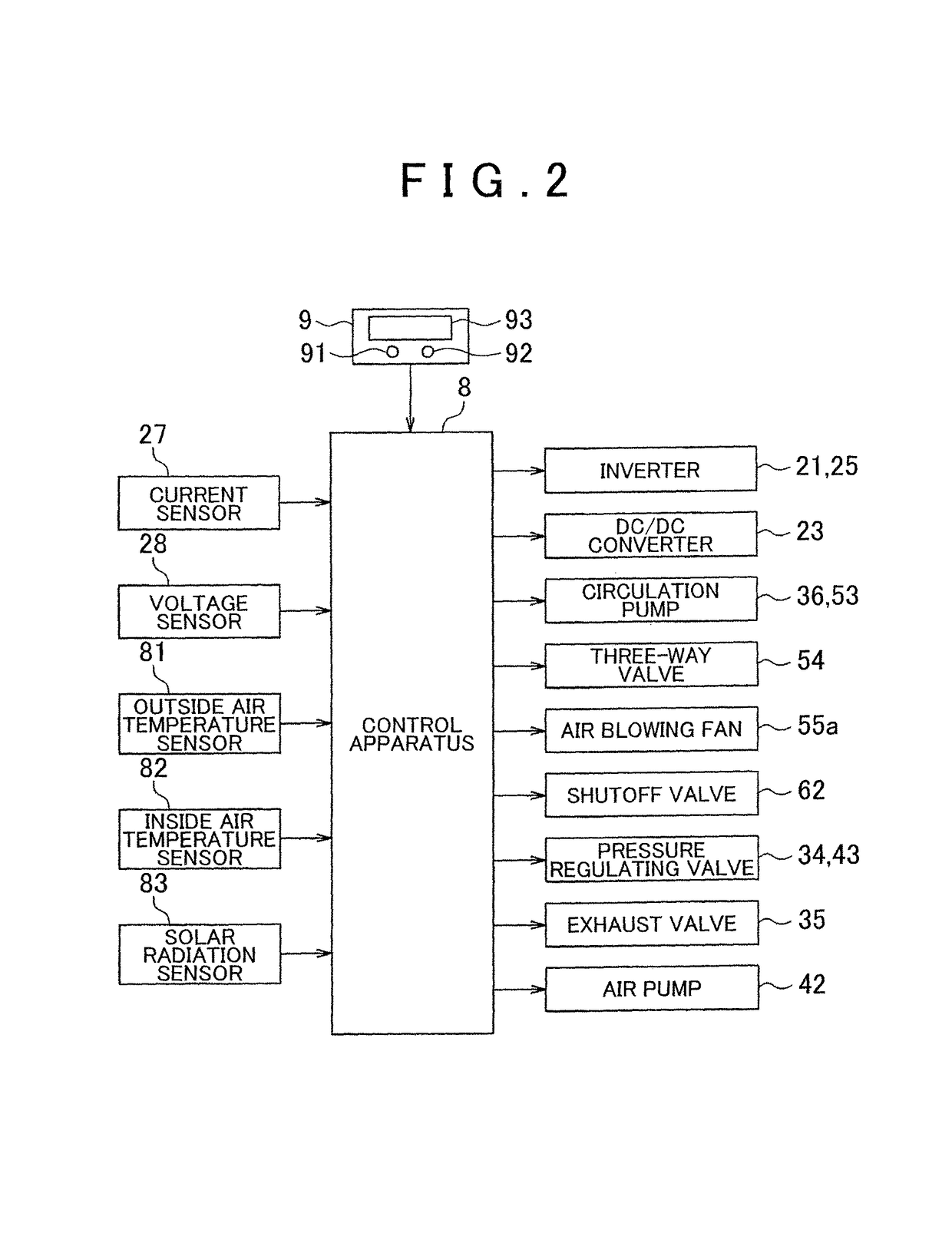Fuel cell vehicle air-conditioning apparatus and control method thereof
a fuel cell and air-conditioning technology, which is applied in the direction of vehicle heating/cooling devices, electric devices, driver interactions, etc., can solve the problems of fuel cell temperature rising beyond the temperature at which the fuel cell can operate efficiently, and the power generation efficiency of the fuel cell may decrease, so as to suppress the deterioration of the fuel efficiency of the vehicle
- Summary
- Abstract
- Description
- Claims
- Application Information
AI Technical Summary
Benefits of technology
Problems solved by technology
Method used
Image
Examples
Embodiment Construction
[0029]An embodiment of the invention will be described below on the basis of FIGS. 1 to 7. FIG. 1 is an overall configuration diagram showing a fuel cell vehicle air-conditioning apparatus according to this embodiment. A fuel cell vehicle air-conditioning apparatus 1 is applied to a so-called fuel cell vehicle, which is a type of electric vehicle.
[0030]As shown in FIG. 1, the fuel cell vehicle air-conditioning apparatus 1 includes a fuel cell 2 that generates power by an electrochemical reaction between air (an oxidant gas) and hydrogen (a fuel gas). The fuel cell 2 is formed with a stacked structure in which a plurality of single cells that generate power when supplied with air and hydrogen are stacked.
[0031]A part of the direct current power generated by the fuel cell 2 is converted into an alternating current by a first inverter 21 and supplied to various electric loads such as a vehicle travel electric motor 22. A further part of the direct current power generated by the fuel ce...
PUM
| Property | Measurement | Unit |
|---|---|---|
| temperature | aaaaa | aaaaa |
| temperature | aaaaa | aaaaa |
| temperature | aaaaa | aaaaa |
Abstract
Description
Claims
Application Information
 Login to View More
Login to View More - R&D
- Intellectual Property
- Life Sciences
- Materials
- Tech Scout
- Unparalleled Data Quality
- Higher Quality Content
- 60% Fewer Hallucinations
Browse by: Latest US Patents, China's latest patents, Technical Efficacy Thesaurus, Application Domain, Technology Topic, Popular Technical Reports.
© 2025 PatSnap. All rights reserved.Legal|Privacy policy|Modern Slavery Act Transparency Statement|Sitemap|About US| Contact US: help@patsnap.com



